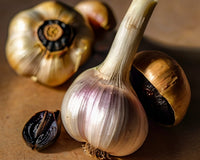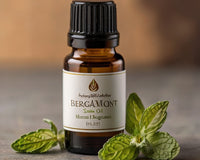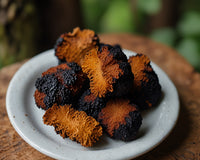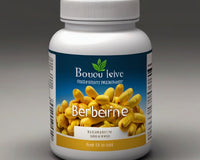Uses and Benefits
Titanium dioxide has a variety of uses in food and product development.
Food quality
Due to its light-scattering properties, small amounts of titanium dioxide are added to some foods to enhance their white color or opacity. Most food-grade titanium dioxide is about 200-300 nanometers (nm) in diameter. This size allows for ideal light scattering, resulting in optimal color. To be added to food, the additive must be 99% pure. However, this leaves room for small amounts of potential contaminants such as lead, arsenic, or mercury. The most common foods that contain titanium dioxide are chewing gum, candies, pastries, chocolate, coffee creamers and cake decorations.
Food preservation and packaging
Titanium dioxide is added to some food packaging to preserve the shelf life of the product. Packaging containing this additive has been shown to reduce ethylene production in fruit, thereby delaying the ripening process and extending shelf life. In addition, the packaging has been shown to have antimicrobial and photocatalytic activity, the latter of which reduces ultraviolet (UV) exposure.
Cosmetics
Titanium dioxide is widely used as a color enhancer in cosmetics and over-the-counter products such as lipstick, sunscreen, toothpaste, creams and powders. It usually comes in the form of nanoscale titanium dioxide, which is much smaller than the food-grade version. It's especially useful in sunscreens because it has impressive UV protection and helps prevent the sun's UVA and UVB rays from reaching your skin. However, because it is photosensitive - meaning it can stimulate the production of free radicals - it is often coated with silica or aluminum oxide to prevent potential cell damage without reducing its UV protective properties. While cosmetics are not suitable for consumption, there are concerns that titanium dioxide in lipstick and toothpaste may be swallowed or absorbed through the skin.
Risk
In recent decades, concerns about the risks of titanium dioxide consumption have grown.
Group 2B carcinogens
The U.S. Food and Drug Administration (FDA) classifies titanium dioxide as generally recognized as safe. That said, the International Agency for Research on Cancer (IARC) has classified it as a Group 2B carcinogen—a substance that may cause cancer but lacks adequate animal and human studies. This has raised concerns about its safety in food. This classification is given because some animal studies have found that inhaling titanium dioxide dust may lead to the development of lung tumors. However, IARC concluded that foods containing this additive do not pose this risk. Therefore, today, they only recommend limiting titanium dioxide inhalation in industries with higher dust exposure, such as the paper industry.
Absorption
There are some concerns about the skin and intestinal absorption of titanium dioxide nanoparticles smaller than 100 nm in diameter.
Some small test-tube studies have shown that these nanoparticles are absorbed by intestinal cells and may cause oxidative stress and cancer growth. However, other studies have found limited effects. Additionally, a 2019 study noted that food-grade titanium dioxide is larger than nanoparticles. Therefore, the authors concluded that any titanium dioxide in food is poorly absorbed and does not pose a risk to human health. Finally, studies show that titanium dioxide nanoparticles do not pass through the stratum corneum, the first layer of skin, and do not cause cancer.
Organ accumulation
Some studies in rats have observed accumulation of titanium dioxide in the liver, spleen and kidneys. That said, most studies used higher doses than you would typically consume, so it's difficult to know whether these effects would occur in humans. A 2016 review by the European Food Safety Authority concluded that the absorption rate of titanium dioxide is extremely low, and any absorbed particles are mostly excreted in the feces. However, they did find that a small amount of 0.01% was taken up by immune cells (called gut-associated lymphoid tissue) and may be transported to other organs. Currently, it is unclear how this might affect human health. Although most studies to date show no harmful effects from titanium dioxide consumption, few long-term human studies are available. Therefore, more research is needed to better understand its role in human health.
Toxicity
In the United States, titanium dioxide is limited to 1% by weight in products, and because of its excellent light-scattering capabilities, food manufacturers only need to use small amounts to achieve desired results. Children under the age of 10 consumed the most of this additive, averaging 0.08 milligrams per pound of body weight per day. By comparison, the average adult consumes about 0.05 milligrams per pound per day, although these numbers vary. This is due to children's higher intake of pastries and sweets and their smaller body size. Due to limited research available, there is no Acceptable Daily Intake (ADI) for titanium dioxide. However, an in-depth review by the European Food Safety Authority found no adverse effects in rats given 1,023 milligrams per pound per day. Still, more human studies are needed.
Side effects
Research on the side effects of titanium dioxide is limited and largely depends on access:
- Orally. There are no known side effects.
- Eyes. This compound may cause mild irritation.
- Inhalation. Inhaling titanium dioxide dust has been linked to lung cancer in animal studies.
- Skin. It may cause mild irritation.
Most side effects are related to inhalation of titanium dioxide dust. Therefore, there are industry standards to limit exposure.
Should you avoid it?
To date, titanium dioxide has been considered safe for consumption. Most studies conclude that the amounts consumed from food are very low and do not pose a risk to human health. However, if you still want to avoid this additive, be sure to read food and drink labels carefully. Chewing gum, pastries, candies, coffee creamers and cake decorations are the most common foods containing titanium dioxide. Keep in mind that the manufacturer may list the compound with a different trade name or common name other than "titanium dioxide," so be sure to inform yourself. Considering titanium dioxide is mostly found in processed foods, it's easy to avoid by choosing whole, unprocessed foods.
Conclusion
Titanium dioxide is an ingredient used to whiten many foods, in addition to cosmetics, paints and paper products. Foods that contain titanium dioxide are typically candies, pastries, chewing gum, coffee creamers, chocolates and cake decorations. Although there are some safety concerns, the FDA generally considers titanium dioxide to be safe. Furthermore, most people do not consume nearly enough to cause any potential harm. If you still want to avoid titanium dioxide, be sure to read labels carefully and stick to minimally processed whole foods.














